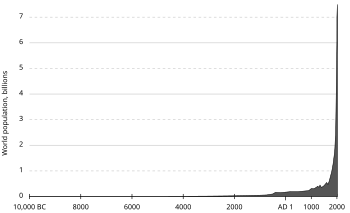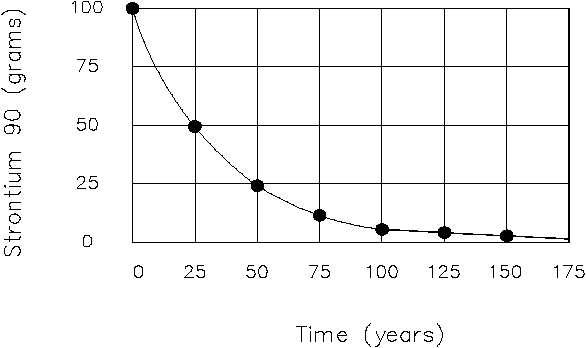|
wateroverfire posted:Hear me out, man, and follow the logic below to the end. This is literally the exact same reasoning as this: GAINING WEIGHT... posted:I think the main disagreement seems to be between whether our scenario is this: He was wrong then, you are wrong now: VitalSigns posted:Let's brute-force the boy-girl problem. I wrote a MATLAB script
|
|
|
|

|
| # ? Apr 24, 2024 01:11 |
|
Phyzzle posted:It's this step here. P(Coin you showed is Coin 2) is not 50%. What you're talking about is adding two pieces of information to what I know that are not present in the original problem. 1) That VS shows me the first coin that pops T. 2) That I know when VS skips coin 1 (or, alternately, that I know which coin VS is showing me). Conditional on those two pieces of info, I know that when VS shows me Coin 2 the probability that Coin 1 is H is 100% since the only possibility is HT. If VS shows me Coin 1, the probability that Coin 2 is H is 50% since the two possibilities are TH and TT. But that is a totally different problem then the one we've been analyzing. =P
|
|
|
|
Buried alive posted:This is literally the exact same reasoning as this: That simulation is not brute forcing the thing in question, so the problem is that you and VS are both bad at stats in this instance. Follow the mathematical argument and find the problems in it, if any, rather than trying ot intuit your way through problems that even trained statisticians gently caress up on because they're counterintuitive.
|
|
|
|
wateroverfire posted:What you're talking about is adding two pieces of information to what I know that are not present in the original problem. No, piece (1) is not being added: whatever coin he grabs first becomes #1 (if they are not marked), so you knew that. And piece (2) is not being added either: You have no idea when he skips coin 1, or which coin he is showing you.
|
|
|
|
Buried alive posted:This is literally the exact same reasoning as this:
|
|
|
|
Phyzzle posted:No, piece (1) is not being added: whatever coin he grabs first becomes #1 (if they are not marked), so you knew that. Ok, sure, if you like. So he grabs a coin that popped T and shows it to me, and we call that Coin 1. P(Coin he shows me is Coin 1) = 100%. P(Coin he shows me is coin 2) is 0% so we drop that term. The possible outcomes are TH, TT as before. P(TH conditional on Coin 1 being T) = 50% (obvious, right? Two possible outcomes, of which that is one) P(Coin he shows me is Coin 1) * P(TH conditional on Coin 1 being T) = 100% * 50% = 50%
|
|
|
|
twodot posted:There really shouldn't be any discussion on "if you take a set of random events and remove all events with a particular quality, does that gently caress with the distribution of that set?" yes of course it does. I do think people are doing a bad job of stating in English whether they are talking about a pre-poisoned set or not. It doesn't actually matter what the distribution of the set is, if the question we're debating is "what is the probability of a coin flipping heads conditional on knowing the result of some other coin flip where the two are independant events". People are doing a really bad job being responsive to the question they think they're being responsive to.
|
|
|
|
wateroverfire posted:Ok, sure, if you like. So he grabs a coin that popped T and shows it to me, and we call that Coin 1.
|
|
|
|
wateroverfire posted:Ok, sure, if you like. So he grabs a coin that popped T and shows it to me, and we call that Coin 1. Yes, that's the case where grabs a coin that popped T and shows it to you. Which is not the only possible case.
|
|
|
|
Your choice between coin 1 or 2 is only 50 50 in the TT case - in the other two cases, you have no agency over which coin you choose, so your logic is bunk from the start. To see it another way, use bayes thrown, but properly. Let c1 and c2 be two coins, with 1 = heads and 0 = tails. P(c1+c2 = 1 | c1 + c2 < 2) = P(c1 + c2 < 2 | c1 + c2 = 1)P(c1 + c2 = 1)/P(c1 + c2 < 2) = 1*0.5/(1/3) = 2/3
|
|
|
|
Phyzzle posted:Yes, that's the case where grabs a coin that popped T and shows it to you. Which is not the only possible case. What other case would you lik to consider?
|
|
|
|
wateroverfire posted:What other case would you lik to consider? All of them. Every possible way for one coin to be Heads must be considered to find the probability of one coin being Heads. Like he grabs one coin, and it's Heads, so he then grabs another.
|
|
|
|
rudatron posted:Your choice between coin 1 or 2 is only 50 50 in the TT case - in the other two cases, you have no agency over which coin you choose, so your logic is bunk from the start. Dude where do I even start with this... I'm just going to go with 1 * (1/2)/(1/3) = 3/2 and not 2/3, and it should be obvious why that result cannot be a probability for anything whatsoever, for right now.
|
|
|
|
Phyzzle posted:All of them. Every possible way for one coin to be Heads must be considered to find the probability of one coin being Heads. Like he grabs one coin, and it's Heads, so he then grabs another. Do the math and show me what you're talking about. But again...just to not get too far afield... The very elemental probability question we've somehow managed to spend like 3 pages talking about is simply "Given two independant coin flips, what is the probability that one coin is H given that we know the other is T".
|
|
|
|
twodot posted:There's a 25% chance they refuse to show you the coin in the first place you've been ignoring. Consider this: I flip a bunch of coins and eliminate all HH and TT pairs from my set (instead of merely all HH pairs), given I show you a H, the chance of the other coin being a T is 100%. But literally none of that is responsive to the question, which is a very straight-forward exercise in probability, "Given two independant coin flips, what is the probability that one coin is H if we know the other is T".
|
|
|
|
wateroverfire posted:Do the math and show me what you're talking about. You did do the math in this post: wateroverfire posted:1) If Coin 1 is T, the only possible outcomes are TH and TT. This is correct and should also be intuitive if you think about it, but if you disagree then show how and let's talk it through. I am saying, P(Coin you showed is Coin 2) is not 50%. He only shows you Coin 2 in the case of HT, which does not have a 50% chance of happening. There is no added information needed. You don't know if the coin being showed is #1 or #2. Without knowing that, P(Coin you showed is Coin 2) is still not 50%. Do you agree that P(Coin you showed is Coin 2) is not 50%? If so, your final result is also not 50%. Phyzzle fucked around with this message at 18:26 on Sep 7, 2016 |
|
|
|
wateroverfire posted:
This formula is incorrect. You can only multiply probabilities P1*P2 if they are independent events. But in this case P1 (which coin I decide to show you) depends on P2 (how the coin flips turned out) For dependent events you need Bayes' Theorem P(A|B) = P(B|A)*P(A)/P(B) P(A): probability of getting at least one heads. This is 75% P(B): Probability I show you a tails. This is equal to the probability of getting at least one tails because I will always show you a tails if there is at least one, so this is 75% P(B|A): probability I show you tails given there is at least one head. There are three equally likely ways to get at least one head: HH, HT, TH, I will show you tails in two of them so probability 2/3 Now we can calculate P(A|B), the probability of getting at least one head provided I showed you tails P(A|B) = (2/3)*75%/75% = 2/3 VitalSigns fucked around with this message at 17:08 on Sep 7, 2016 |
|
|
|
Yeah whoops, I should have written 3/4 instead of 1/3, that's my boo boo. The rest of the math works, and vitalsigns is here to actually explain it properly
|
|
|
|
wateroverfire posted:But literally none of that is responsive to the question, which is a very straight-forward exercise in probability, "Given two independant coin flips, what is the probability that one coin is H if we know the other is T".
|
|
|
|
Well, if this thread has taught me anything, it's that a bayesian statistics unit/chapter would be a huge boon to high school curricula.
|
|
|
|
wateroverfire posted:Ok, sure, if you like. So he grabs a coin that popped T and shows it to me, and we call that Coin 1. You can't do this. You're designating the coins based on the outcomes of the flips, rather than a variable that is independent of the outcome. It would be valid to say - we'll randomly observer a coin, and designate it as the observed coin, and the other coin as the unobserved coin. This works because the coin you chose to observe is independent of the what the outcome of the coin flips is. And that's what you're doing in the "flip two coins, randomly select a coin to observe, observe the result, outcome of the other coin flip is independent of the observed coin." So one potential problem is - based on your coin designation scheme - what's the probability that there actually is a coin 1?
|
|
|
|
A multi-page debate over something that is taught in an Intro to Statistics course. Goons.
|
|
|
|
twodot posted:No one is asking that question. The fact that you think anyone is asking this question is a direct demonstration that this is a failure to communicate in English. Maybe stating the reverse of the problem would help clarify this possible misunderstanding. wateroverfire & friends: I flip two coins and decide to show you one. If they are not both heads I will always choose to show you a tails. I show you a heads. What is the probability the other coin is heads? Is it 50%? (No).
|
|
|
|
Someone mentioned William Lane Craig's use of Hilbert's Hotel (as part of his version of the cosmological argument) a few pages back, and I just wanted to say that WLC is a sloppy writer and a not-very-good philosopher and that his Hilbert's Hotel argument is a great example of him being sloppy and not-good.
|
|
|
|
Okay, here's another one that got me thinking. Take this distribution for the weight of adult males.  (You turn it into a probability distribution by dividing it all by the area under the curve, to give it a new area of 1.) We can conclude from this distribution that "If you are an adult male, you probably don't weight 50 or 500 lbs." So picking an adult male from a phone book and getting a 50 pounder is not very likely. Doing the same thing with the distribution of population as a function of year,  We see that "If you are a human life, you are more likely to happen in the 21st century than in the 1st century." Okay, makes sense, it is likely that you would be alive now, when people are finding it particularly easy to be alive. But . . . what about the time after the 21st century? If the population keeps going, or at least levels off, that would put you at a tail-end extreme of the distribution. This is not very likely. Thus, the fact that you are living now serves as evidence that it is unlikely that the human population will not be sticking around over 7 billion for long, and we are in for a catastrophic population crash in the near future.
|
|
|
|
I feel like there's a kind of mind/body duality assumption in that argument - you as a person 'exist', then a dice is rolled, then you're placed where the dice says. But actually dealing with the paradox head on, I don't think it's legitimate to attempt to derive a distribution in general from a skewed example - taking the previous set up as the 'experiment', you're only sampling people who are alive right now, not in the future, so it's obviously 'very likely' that'd you be sampling people 'in the tail end' of the distribution, even assuming a plauteu for the next million years, because you're not a time traveler. I mean the fact that the same argument works in 2000 B.C, and reaches a different conclusion to using it today, should be the tip-off that it's bullshit. Man, I think we're powering through these. OP, throw us another one. im gay posted:A multi-page debate over something that is taught in an Intro to Statistics course. Goons.
|
|
|
|
Phyzzle posted:Okay, here's another one that got me thinking. Basically the second graph is not actually a probability distribution, though it might appear to be. All it's reporting is the number of people in a certain timeframe. You can extrapolate from that that people are more likely to be born when there's more people (for obvious reasons), but it's not relaying the same information. The other thing is that in probability distributions you try to make it as close to a consistent system as possible - for example, the first graph might be "distribution of adult male weight for 2012", so the consistent part is that all the data was from one year. In the second graph, there's a clear shift about 1500 AD that makes it unlikely that the previous data has any relation to the succeeding data.
|
|
|
|
rudatron posted:But actually dealing with the paradox head on, I don't think it's legitimate to attempt to derive a distribution in general from a skewed example - taking the previous set up as the 'experiment', you're only sampling people who are alive right now, not in the future, so it's obviously 'very likely' that'd you be sampling people 'in the tail end' of the distribution, even assuming a plauteu for the next million years, because you're not a time traveler. So samples are very likely to be in the tail end of the distribution ... if you are, in fact, sampling people who happen to be right now in the tail end of the distribution? But that's the whole question: what is the likelihood that you are sampling people who happen to be in the tail end of the distribution? computer parts posted:Basically the second graph is not actually a probability distribution, though it might appear to be. All it's reporting is the number of people in a certain timeframe. You can extrapolate from that that people are more likely to be born when there's more people (for obvious reasons), but it's not relaying the same information. Forgetting the weights, what about this time distribution?  Can we say of a given yttrium radioactive decay product: "this probably decayed less than 150 years after the lump of strontium formed"? Or would looking at a particular yttrium atom that took 200 years to form skew the distribution, so that we cannot make statements about it's probable age? rudatron posted:I mean the fact that the same argument works in 2000 B.C, and reaches a different conclusion to using it today, should be the tip-off that it's bullshit.
|
|
|
|
I like the way you think, but you're clearly not going far enough. Consider this: The number of humans living on this planet is vanishingly small compared to the number of insects who do so. It is therefore exceedingly unlikely that you would have been born a human being. Ergo, the reasonable conclusion is that you're actually an insect in denial.
|
|
|
|
Brain Bugs?! Frankly, I find the idea of a Bug that thinks offensive.
|
|
|
|
VitalSigns posted:Maybe stating the reverse of the problem would help clarify this possible misunderstanding. Yeah, I see where you're going.
|
|
|
|
From my distribution of "everyone born in 2016", I have concluded there is a 100% chance of any human being born before September 9. Therefore 0 people will be born the rest of the year, we must alert the medical community to this impending health crisis. E: serious answer, you can't draw conclusions about the population "all humans who will ever be born" from the nonrepresentative sample "all humans born before 2017" VitalSigns fucked around with this message at 00:46 on Sep 9, 2016 |
|
|
|
VitalSigns posted:E: serious answer, you can't draw conclusions about the population "all humans who will ever be born" from the nonrepresentative sample "all humans born before 2017" So by 'nonrepresentative', you mean 'having a specific range of values in the parameter of interest'? I could see that. Knowing the distribution of weights under 190 lbs. tells you absolutely nothing about the distribution of weights over 190 lbs.. Even though it really looks like part of a bell curve, it's mathematically illegal to just draw in the rest of the curve. You would need some other information about human weight, like "adults rarely triple in size from diet and genetic differences." computer parts posted:The other thing is that in probability distributions you try to make it as close to a consistent system as possible - for example, the first graph might be "distribution of adult male weight for 2012", so the consistent part is that all the data was from one year. In the second graph, there's a clear shift about 1500 AD that makes it unlikely that the previous data has any relation to the succeeding data. Hmm, perhaps such a relation has the opposite effect: the succeeding data might have a very sensitive dependence on events related to previous data. That would also make it very unlike a probability distribution.
|
|
|
|
Given the rapid increase in silly anthropic arguments over the past few decades, we should expect anthropic arguments to be thoroughly debunked within the next 10 years.
|
|
|
|
Problem of induction: discuss. Edit Without reference to Kant's synthetic a priori
|
|
|
|
In quantum mechanics, wavefunction collapse of spatially separated entangled particles is taken to happen instantaneously after the measurement of one. However, instantaneous is a poorly defined concept (via relativity). What actually happens?
|
|
|
|
Spazzle posted:In quantum mechanics, wavefunction collapse of spatially separated entangled particles is taken to happen instantaneously after the measurement of one. However, instantaneous is a poorly defined concept (via relativity). What actually happens? Lol, Copenhagen.
|
|
|
|
In some threads, you'll find links to other threads. Often, especially when people quote each other, the threads contain links to themselves. To be honest, almost all of them do. I've been thinking of keeping track of every thread that don't contain links to themselves. I'm thinking of creating a thread with links to each of these threads. Should I include a link to that thread in the list?
|
|
|
|
Dr. Arbitrary posted:In some threads, you'll find links to other threads. Often, especially when people quote each other, the threads contain links to themselves. To be honest, almost all of them do.
|
|
|
|

|
| # ? Apr 24, 2024 01:11 |
|
Strudel Man posted:Make two copies of the list. One has a link to the other one. Gonna have to tell my barber about that next time I go in for a shave.
|
|
|




















